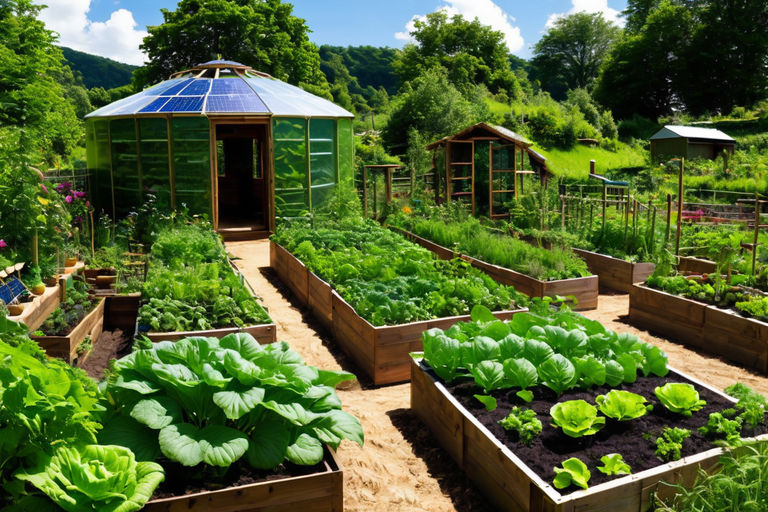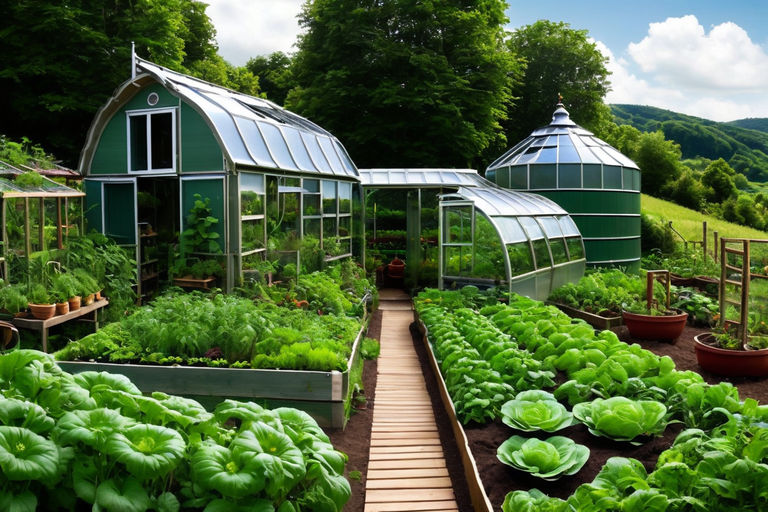Unlock the secrets of sustainable living with our beginner’s guide to permaculture basics. Discover how to thrive naturally!
Table of Contents
- Introduction to Permaculture
- The Principles of Permaculture
- How Permaculture Helps Farmers
- Permaculture in Our Backyards
- Becoming a Young Permaculture Hero
- Frequently Asked Questions (FAQs)
- Key Aspects of Permaculture
- Final Thoughts
Introduction to Permaculture
Permaculture 101 is about learning how to be a superhero for the Earth! Imagine a world where plants, animals, and humans all live happily together, like one big happy family. That’s what permaculture is all about – creating a sustainable and harmonious way of farming and living with nature, not against it.
Permaculture Basics
What is Permaculture?
Permaculture is like a cool secret code that nature follows to create a perfect balance. It’s about working with nature, not against it. Instead of using chemicals that can harm the environment, permaculture finds bright and natural ways to grow food and care for the land. It’s all about being kind to the Earth and ensuring everything works together harmoniously.
Permaculture is not just a gardening technique, but rather a philosophy that envisions a brighter future for both humans and the planet. At its core, permaculture is about designing sustainable systems that mimic nature’s patterns and principles. It emphasizes the importance of working with, rather than against, nature to create abundance and resilience.
By embracing permaculture principles, we can transform our surroundings into thriving ecosystems that provide food, shelter, and resources while also regenerating the land. This approach not only benefits our immediate environment but also has far-reaching implications for global sustainability. In essence, permaculture offers a roadmap to creating a harmonious relationship between humans and the natural world, paving the way for a more balanced and prosperous future for all living beings on Earth.
Why Permaculture is Very Important
Permaculture is super important because it helps ensure that the Earth stays healthy and happy. By following permaculture principles, we can help plants, animals, and humans thrive together. It’s like being a superhero for the planet, ensuring everything is balanced, and everyone is cared for. Permaculture is the key to creating a sustainable world where everyone can live happily ever after.

The Principles of Permaculture
Permaculture is like a smart guide that helps us care for the Earth in the best way possible. It follows some cool rules that ensure everything in nature lives happily together.
Nature is the Best Teacher
Permaculture looks at how nature works and tries to copy it. For example, in a forest, different plants help each other grow, just like friends helping each other out. Permaculture says, “Hey, let’s do that too!”
Sharing is Caring
In permaculture, everyone gets to share the goodies. The soil receives yummy nutrients, bugs help pollinate flowers, and we enjoy fresh fruits and veggies. It’s like a big party where everyone brings something special to share!
#permaculture #sustainability #inspiration
How Permaculture Helps Farmers
Permaculture believes that soil is like a delicious chocolate cake for plants. Just like we need good food to grow healthy and robust, plants need nutrient-rich soil to thrive. By taking care of the soil and feeding it with natural goodies like compost, farmers can grow happy plants that produce tasty fruits and vegetables.
Farming with Nature’s Help
Instead of fighting against nature, permaculture farmers work alongside it to grow food harmoniously with the environment. They welcome birds, bees, and even worms to their farms, knowing they play essential roles in pollination, pest control, and soil health. By creating a balanced ecosystem on the farm, permaculture farmers can reduce the need for harmful chemicals and artificial inputs, making farming sustainable and regenerative.
Permaculture in Our Backyards
In our backyards, we have the power to create mini ecosystems that are beautiful and provide us with delicious treats. Imagine turning your backyard into a magical food forest where you can pick fresh fruits and veggies whenever possible!
Growing a Pizza Garden
Have you ever considered growing all the ingredients for a pizza right in your backyard? With a pizza garden, you can grow tomatoes, basil, peppers, and even mushrooms! It’s like having your pizza toppings just a few steps from your kitchen. Plus, watching your plants grow and transform into yummy toppings for your homemade pizza is super fun.
Wildlife Wonderland
When you create a food forest in your backyard, you’re providing food for yourself and a home for all sorts of fantastic creatures. Butterflies, ladybugs, bees, and birds will be attracted to your garden, making it a bustling wildlife wonderland. These little helpers will pollinate your plants, eat pesky bugs, and add a touch of magic to your backyard oasis.
Becoming a Young Permaculture Hero
Want to be a permaculture hero? It’s easy! Start with small projects like planting a sunflower in your backyard. Sunflowers are beautiful and attract helpful insects like bees and butterflies. Plus, they provide seeds for birds to enjoy!
Join the Permaculture Team
Being a permaculture hero is even more fun when you team up with friends and family. You can create a mini food forest in your school garden or start a compost bin at home. By joining forces, you can make a big difference in caring for our planet!
Throughout this permaculture journey, we’ve discovered how this fantastic approach to farming and living can be a superhero for the Earth. By understanding the principles of permaculture and embracing sustainable practices, we can positively impact our planet and create a better future for all living beings.
Why Permaculture is Super Important
Permaculture teaches us to work with nature, not against it, creating harmony between plants, animals, and humans. Following permaculture principles and practicing regenerative farming can ensure healthy soil, happy plants, and a thriving ecosystem.
Permaculture in Our Backyards
Imagine transforming your backyard into a mini food forest, where you can grow your own pizza garden and create a wildlife wonderland for butterflies and ladybugs. By incorporating ecological design into our outdoor spaces, we can support biodiversity and create a sustainable environment for all creatures.
As young permaculture heroes, we have the power to make a difference in the world. We can begin our journey towards a more sustainable future by starting small projects like planting a sunflower or making a compost bin. By joining forces with friends and family, we can amplify our impact and create a community of change-makers.
We can embrace permaculture principles, practice sustainable agriculture, and promote regenerative farming to create a world where plants, animals, and humans can thrive in harmony. Let’s continue to learn, explore, and grow as stewards of the Earth, positively impacting our planet for generations to come.
Frequently Asked Questions (FAQs)
Can I make my own permaculture garden?
Yes, you can make your permaculture garden! It’s super easy to start, and you can do it right in your backyard or even in pots on your balcony. All you need is some soil, seeds, and a little love and care for your plants.
Do I need a big yard to do permaculture?
No, you don’t need a big yard to practice permaculture. It can be done in small spaces, like a tiny garden or balcony, or even indoors with some pots. It’s all about working with nature and using what you have wisely to create a little piece of paradise for plants and animals.
Key Aspects of Permaculture
Topics Related To Permaculture
**Land Design and Planning** * Site assessment and design * Permaculture design principles * Zones and sectors * Keyline design * Water harvesting and management **Gardening** * Guild planting * Composting and soil fertility * Mulching and crop rotation * Natural pest and disease control * Food preservation **Animal Husbandry** * Pasture management * Animal welfare * Sustainable livestock practices * Natural veterinary care * Integrated farming systems **Water Management** * Rainwater harvesting * Swales and contour bunds * Graywater systems * Natural water filtration * Water conservation techniques **Energy** * Renewable energy systems (solar, wind, geothermal) * Energy efficiency and conservation * Passive solar design * Biogas and fuel wood
Community and Social Aspects
Participatory design and planning * Community gardens and food banks * Local food systems * Ecovillages and sustainable communities * Traditional ecological knowledge
Natural Building
* Natural materials and earth construction * Cob, rammed earth, and straw bale buildings * Green roofs and living walls * Passive solar and thermal mass
Education and Outreach
* Permaculture workshops and courses * School gardens and environmental education * Community outreach and advocacy * Media and publications
Other
* Holistic grazing and regenerative agriculture * Agroecology and food security * Carbon farming and climate adaptation * Ethical and sustainable practices * Local and community economies
Final Thoughts
Permaculture offers us a transformative approach to living in harmony with nature and creating sustainable systems for the future. By coming together and embracing permaculture principles, we can positively impact our environment and communities. Let’s take action today to implement permaculture practices in our lives, whether it’s through gardening, sustainable design, or community building. Together, we can create a better future for ourselves and future generations. Join us in this journey towards a more harmonious and regenerative world – our planet deserves nothing less.





